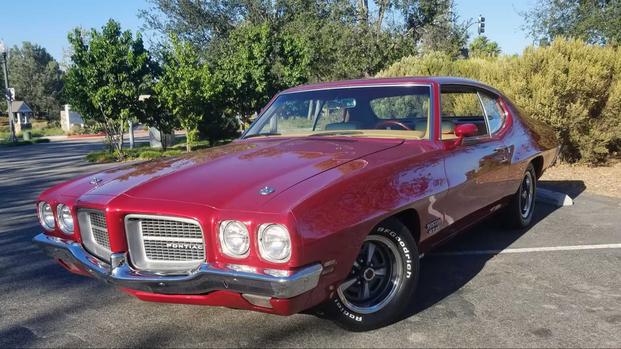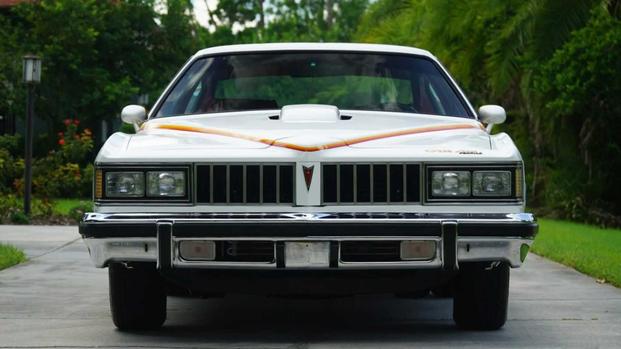by Matt Nelson
By the early 1970s, the good old days of the American classic muscle car were quickly coming to a close. New, federal emissions regulations were coming into effect, which included the use of unleaded fuel, along with measures being undertaken to reduce tailpipe emissions. Because of these new regulations, American automakers were forced to modify their engines by reducing compression ratios and installing smog pumps, both of which robbed horsepower.
As a result, many domestic brands began cutting back on producing nameplates that were formerly associated with muscle. For example, Plymouth axed the Barracuda in 1971. Some nameplates remained, but were repurposed as personal luxury coupes, such as the AMC Hornet.
In addition, some brands changed their definition of muscle entirely, such is the case with our model of interest today: the 1977 Pontiac LeMans Can Am. It boasted all the trappings of a muscle car, but was short-lived. Not due to bad sales or poor performance, but because of a crucial factory mishap.
A Short-Lived Malaise-Era Muscle Car

Bring A Trailer
Pontiac Le Mans Can Am Key Points
- Produced in 1977
- Featured a 400 CID V8
- Based on both the Pontiac LeMans and Grand Am
- Approximately 1,300 were built
- Situated on GM's A-Body vehicle platform
Followers of the Pontiac faith will know of the LeMans and the effect the model had on the domestic automotive market. It was introduced in 1961 as the top-spec trim package for the Pontiac Tempest, a model boasting unique features for its time, such as a flat cabin floor and an inline-four-cylinder engine called the Trophy 4 which, in essence, was half of a Pontiac 389 CID V8 bearing the name "Trophy 8". At first, the LeMans, along with the Tempest as a whole, was not successful regarding sales.
However, the LeMans' luck would shift upon its debut as a standalone model in 1963. The introduction of the now-famous GTO package to the LeMan's order sheet in 1964 catapulted the model to stardom. For context, General Motors predicted that roughly 5,000 GTO package-equipped Pontiac LeMans' would be sold during its first model year. However, when the real numbers came through the pipeline, the model actually sold 32,450.

Mecum
Once the Pontiac GTO itself became a standalone model in 1966, the LeMans continued to boast a sporting prowess, albeit to a much lesser extent. While V8s were still on the offering list, one of the LeMans' "performance packages" was coined "the Sprint", although it only boasted a hopped-up straight-six. By 1970, you could fit a LeMans with engines as large as Pontiac's 455 CID Large-Journal big-block V8. However, by the model's fourth-generation debut in 1973, the 455 was lost, as the largest engine now on offer was a Pontiac 400 CID V8.
Enter The Ill-Fated Can Am

Bring A Trailer
Near the end of the fourth-gen LeMans' life, Pontiac decided to spice things up a little bit with the injection of some well-placed Malaise-Era muscle. The name for the upcoming model would be the Can Am, taking its name from the Canadian-American Challenge Cup (Can-Am) racing series, despite Pontiac never being involved in the series. Being that this new model was going to be produced squarely within the worst of the Malaise Era, it certainly wouldn't be setting any circuits on fire.
Read the full article on CarBuzz
This article originally appeared on CarBuzz and is republished here with permission.










